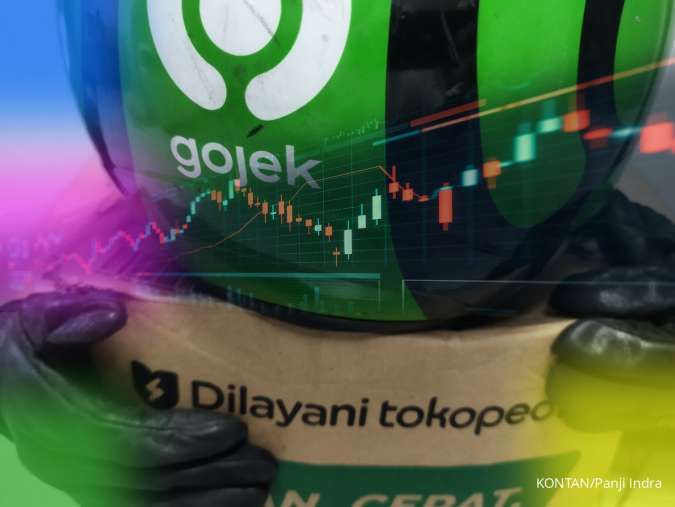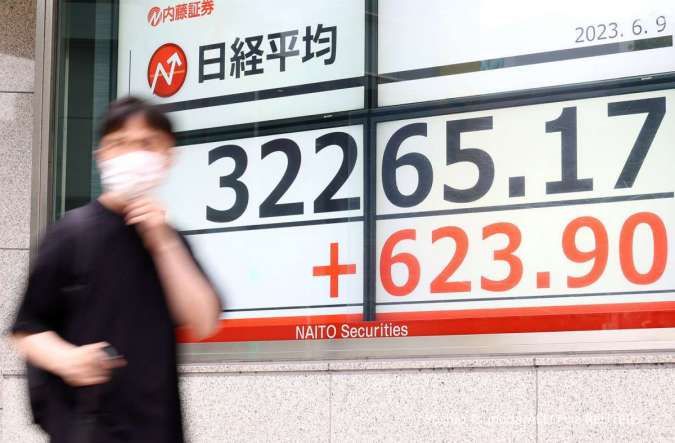KONTAN.CO.ID - LONDON. The dollar edged up from a three-month low on Thursday but was still set to post its steepest monthly decline in a year as investors ramped up bets that the Federal Reserve was done with rate hikes ahead of a crucial inflation report later in the day. The euro dropped after lower-than-forecast French consumer prices data, a day after data showed price growth in Germany and Spain also slowed, suggesting downside risks to the euro area figure released later in the day. The dollar index, which measures the U.S. currency against six rivals, rose 0.35% to 103.18, gaining from 102.46 reached on Wednesday which was its lowest level since Aug. 11.
The index is still down around 3.3% in November on growing expectations the Fed will cut interest rates in the first half of 2024. "The key drivers in November for the dollar weakness have been the benign inflation data and the loosening signs of the labour market," said Mohamad Al-Saraf, associate, FX and rates strategy at Danske Bank. "The notion of a soft landing has increased and usually that's a bad environment for the dollar."
Read Also: Asia Stocks Closing In On Strongest Month Since January Investors will be all ears on Friday when Fed Chair Jerome Powell takes centre stage in the wake of Fed Governor Christopher Waller on Tuesday flagging a possible rate cut in the months ahead. But before that, the spotlight will firmly be on Thursday's crucial personal consumption expenditure (PCE) price index - the Fed's targeted measure of inflation. Christopher Wong, currency strategist at OCBC, said the data will offer a glimpse into whether the disinflation trend seen so far remains intact. "If core PCE undershoots expectations to the downside, then USD may extend the move lower again," he said. U.S. rates futures markets are now pricing in more than 100 bps of rate cuts next year starting in May, and the two-year Treasury yield is close to its lowest since July - it has slumped about 30 bps this week alone. The reprieve for the dollar came after inflation in France continued to ease in November, weighing on the euro and giving a lift to the greenback. The EU-harmonised preliminary inflation reading printed at 3.8% year-on-year, below a Reuters poll of economists, which had predicted 4.1% and down from 4.5% in October. "Yesterday we saw weaker data from Germany and Spain and this morning France and it looks like the aggregate figure we get from the euro zone will most likely be lower than expected," Danske Bank's Al-Saraf said. Read Also
: China's Factory Activity Extends Declines in November "If that happens, we could see more rate cuts priced for the European Central Bank and initially it will probably be bearish for the euro." The euro, the largest weight in the dollar index, was down 0.43% against the dollar to $1.0921. On Wednesday it hit its highest level since August at $1.1017.
Meanwhile, expectations that the Bank of Japan will soon end its negative rate policy have pulled the yen up from the depths, and in the process, eased pressure on the central bank to support the currency via direct FX market intervention. On Thursday, the yen strengthened 0.07% to 147.085 per dollar, remaining close to the two-and-a-half-month high of 146.675 per dollar it touched on Wednesday. The Asian currency has firmed 3% against the dollar in November and is on course for its strongest month this year. Bank of Japan board member Toyoaki Nakamura said on Thursday the central bank will likely need some more time before phasing out its massive stimulus. Sterling was last at $1.2664, down 0.25% on the day, while the Australian dollar rose 0.08% to $0.6622 and is up 4.5% in November - its steepest one-month gain in a year.





